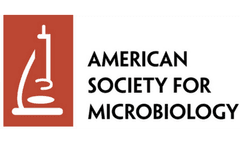Tumors To Immunologically Responsive Hot Tumors Articles & Analysis
15 articles found
Adenoviruses are a group of viruses that have gained significant attention in recent years, particularly in the fields of gene therapy, vaccine development, and cancer treatment. With their ability to deliver genetic material into cells effectively, adenoviruses serve as valuable vectors in various biomedical applications. To harness their potential, specialized adenovirus production services ...
In this white paper, Predictive Oncology (POAI) highlights a recent successful project in partnership with the University of Michigan Natural Products Discovery Core (NPDC) through the ACE program. The ACE program supports academic researchers in their early drug discovery and development initiatives by providing access to the POAI proprietary active machine learning platform and ...
Circulating Tumor Cells, or CTCs, are cancer cells that have shed from the primary tumor and enter the bloodstream, where they can travel and potentially lead to metastasis. These cells are of significant interest in oncology due to their potential to provide vital information about the tumor’s characteristics and behavior. One of the advanced techniques used to analyze CTCs is Fluorescence ...
Preclinical drug discovery represents a critical phase in the development of new therapeutics. It is the process that bridges the gap between basic research and clinical testing, allowing for the evaluation of potential drug candidates in biological systems before they are tested in humans. Central to this phase is the use of appropriate disease models, which are essential for understanding the ...
Alfa Cytology has launched ovarian cancer therapy development services. Alfa Cytology, a prominent services provider in oncology, has launched its cutting-edge ovarian cancer therapy development services. This significant advancement represents a vital leap in the quest for more precise and effective treatments for ovarian cancer. With the complexities of ovarian cancer treatment becoming ...
Colorectal cancer is one of the leading causes of cancer-related deaths globally. To advance our understanding of this disease and improve treatment strategies, researchers heavily rely on colorectal cancer cell lines. These cell lines serve as essential models for studying the biology of colorectal cancer, testing new therapies, and exploring the mechanisms of drug resistance. What are ...
Introduction Chemotherapy with anti-tumor agents is currently one of the most important systemic treatments for cancer. However, direct treatment with drugs lacks specificity and sensitivity and tends to attack normal cells indiscriminately, resulting in side effects. Liposomes, as drug carriers, provide a superior solution for maintaining or enhancing the efficacy of chemotherapy while reducing ...
The concept of ADCs was first proposed by Nobel Prize winner Paul Ehrlich in 1913. But it was not until 1975, when hybridoma technology began to be used to produce monoclonal antibodies, that the era of ADC drug development truly began. Driven by increasingly mature technology, ADC drugs have gone through three iterations (Fig. 1). Although ADCs have gone through three iterations, current ...
In the past ten years, the number of antibody drug conjugates (ADCs) entering clinical trials has steadily increased. Currently, 9 ADCs have been approved, of which 5 are used for hematoma and 4 for solid tumor treatment. After more than 20 years of development, ADC biopharmaceuticals are becoming the main force in the treatment of cancer. Currently, one of the most important challenges when ...
Researchers at The University of Texas MD Anderson Cancer Center have identified a new strategy to reduce immune-related adverse events by targeting immunotherapy with the cytokine interleukin-6 (IL-6). The study, published in Cancer Cell, provides evidence for the concept of combining immune checkpoint blockers and cytokine blockers to selectively inhibit inflammatory autoimmune responses. ...
Simply put, CAR-T is to transform the patient's immune T cells in vitro by biotechnology, so that they recognize antigens on the surface of tumor cells, and then inject these cells back into the patient to achieve the therapeutic effect of recognizing and killing cancer cells. In 2017, CAR-T therapy was first approved by the FDA for the treatment of blood cancers such as leukemia and lymphoma. ...
Researchers at the Children's Hospital of Philadelphia (CHOP) have made a breakthrough in the treatment of aggressive solid cancers, and they have developed a new cancer treatment that targets proteins within tumor cells that are essential for tumor growth and survival, but this has not been possible before. Using the power of large data and advanced computational methods, researchers can ...
RNA is a hydrophilic, negatively charged macromolecule, and its ability to autonomously transmembrane is limited. Therefore, how to efficiently deliver mRNA to the cytoplasm and play a corresponding role is one of the key issues that limit the application of RNA therapy. The wide range of applications of therapeutic mRNA requires efficient and safe delivery methods. An ideal delivery system ...
Why do we need new cell contenders in the CAR field? Well, different CAR immune cells have different advantages and sometimes unique challenges or limitations. So, we began our discussion of alternative CAR-cell types with CAR-NK cells due to their current standing as the most popular alternative CAR-based therapy. However, the expansion of CARs to other cell types has already begun and ...
Proteins entering the eukaryotic secretory pathway commonly are glycosylated. Important steps in this posttranslational modification are carried out by mannosyltransferases. In this study, we investigated the putative {alpha}-1,2-mannosyltransferase AfMnt1 of the human pathogenic mold Aspergillus fumigatus. AfMnt1 belongs to a family of enzymes that comprises nine members in Saccharomyces ...









